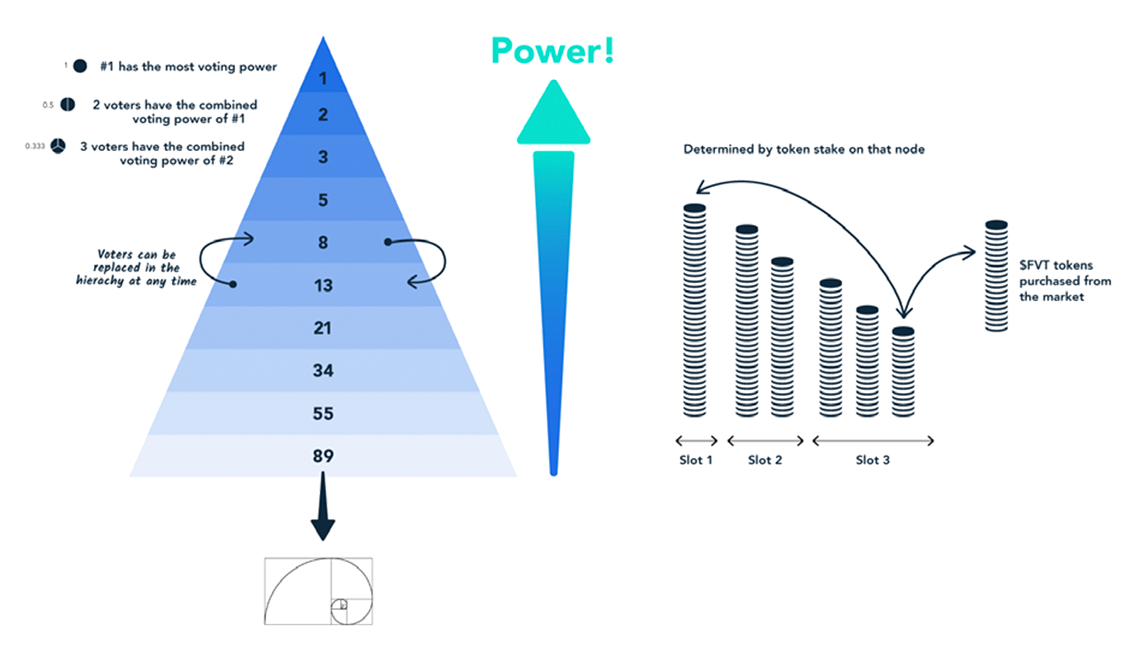Second Layer Governance
Bringing Politics to DeFi
Problem
Many established networks lack any formal governance mechanism to receive accurate signals from their token holders regarding the future direction of the network.
Loose and chaotic social signalling systems, such as Telegram and Reddit are ineffective for reaching consensus, are prone to spam and are an inconvenience for teams.
DeFi DAOs are often heavily gated and cornered by asymmetric token issuances, meaning that users have no meaningful influence on the network.
Permissionless systems allow projects to be easily cloned and users can be duped into buying fake tokens or engaging with projects that are outright scams 10.
Introduction
Hierarchical Governance
miniDAOs
Blockchain Agnostic
The $FVT miniDAO: Ethereum based.
A $BTC miniDAO: Bitcoin based.
One other; TBC
Scalable voting
Plutocracy
The .vote consensus mechanism

Summary
- 10
“Fake Tokens Continue to Plague Uniswap - Cointelegraph.” 19 Aug. 2020, https://cointelegraph.com/news/fake-tokens-continue-to-plague-uniswap. Accessed 26 Aug. 2020.
- 11
“Against on-chain governance. Refuting (and rebuking) Fred ….” 30 Nov. 2017, https://medium.com/@Vlad_Zamfir/against-on-chain-governance-a4ceacd040ca. Accessed 26 Aug. 2020.
- 12
“Tron’s Takeover of Steemit Is Internet History Repeating Itself ….” 5 Mar. 2020, https://www.coin-desk.com/trons-takeover-of-steemit-is-internet-history-repeating-itself. Accessed 26 Aug. 2020.
- 13
“Leak reveals collusion on EOS blockchain - The Block.” 1 Oct. 2018, https://www.theblockcrypto.com/linked/1015/leak-reveals-collusion-on-eos-blockchain. Accessed 26 Aug. 2020.
- 14
“YAM Finance Crashes Over 90%, Founder Admits His Failure.” 13 Aug. 2020, https://cryptopotato.com/yam-finance-crashes-over-90-founder-admits-his-failure/. Accessed 26 Aug. 2020.
- 15
The Compound governance token ($COMP) requires 1% of the total token supply delegation to sub- mit a proposal, currently valued at $16.7m. https://compound.finance/docs/governance#introduction